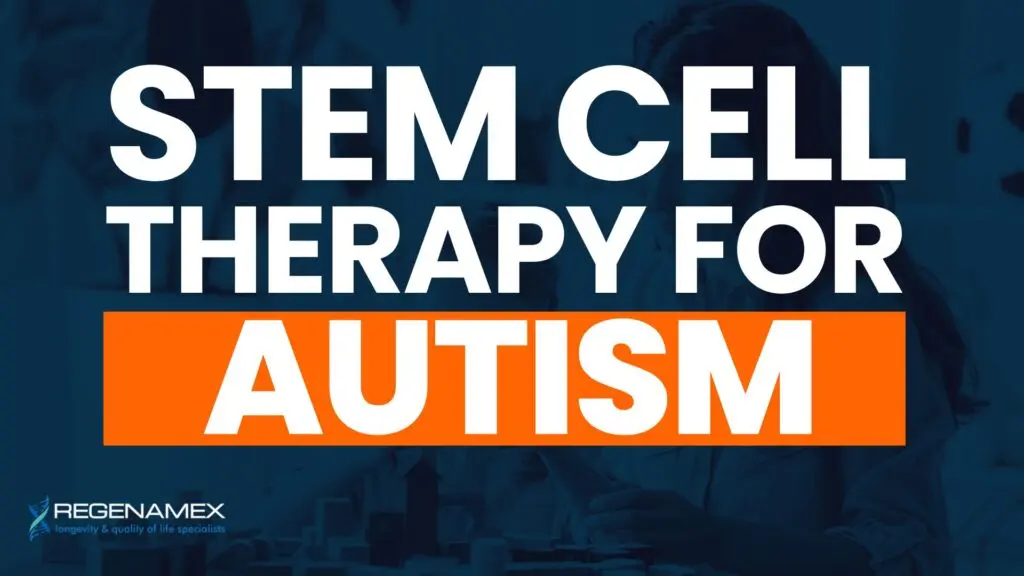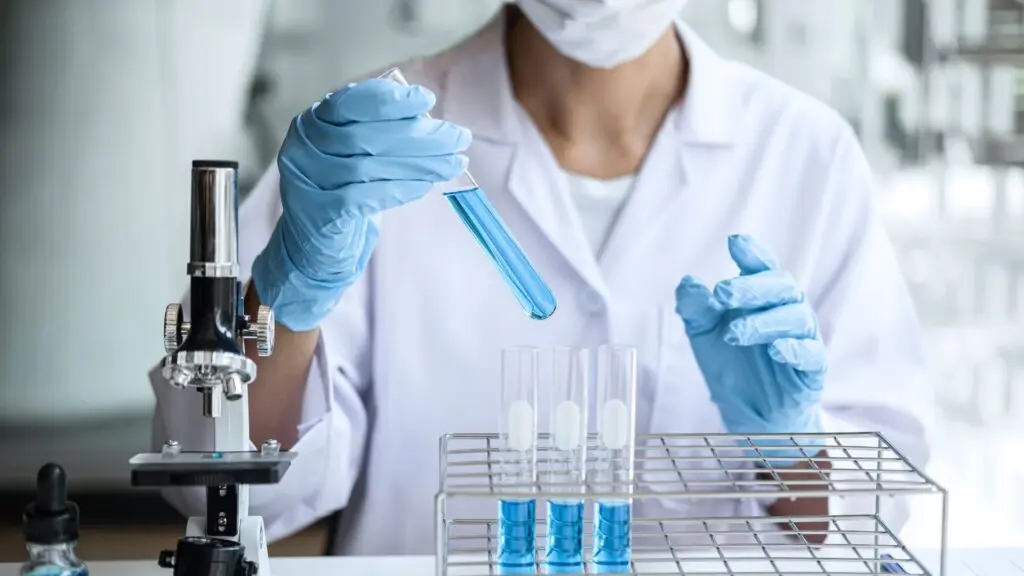
Understanding Stem Cell Therapy for Autism: A Breakthrough in Regenerative Care
Stem cell therapy for autism is an innovative, science-backed approach that leverages the regenerative power of mesenchymal stem cells (MSCs) to support individuals diagnosed with Autism Spectrum Disorder (ASD). While autism is traditionally addressed through behavioral interventions and pharmaceuticals, stem cell therapy targets the underlying biological dysfunctions—such as chronic neuroinflammation, oxidative stress, and immune dysregulation—that research has increasingly identified in those with ASD. By directly interacting with the immune and nervous systems, MSCs help modulate inflammatory responses and create a neuroprotective environment that fosters better cognitive, emotional, and behavioral outcomes.
At Regenamex, we exclusively use MSCs sourced from Wharton’s jelly and placental tissue. These cells are rich in anti-inflammatory, immunomodulatory, and neurotrophic factors. Once administered into the body, these cells act through mechanisms like immunomodulation, neuroprotection, and paracrine signaling. This means they don’t just offer symptom suppression—they actually influence the body’s ability to heal itself by calming immune overactivation, repairing damaged brain cells, and improving neuronal connectivity. For many families, this therapy offers hope beyond conventional treatments by addressing autism at its cellular root.
Who Can Benefit from This Therapy? Profiles of Ideal Candidates

Parents and caregivers exploring stem cell therapy for autism often do so after exhausting traditional methods such as speech therapy, behavioral therapy, and medication. This treatment may be especially beneficial for individuals experiencing moderate to severe ASD symptoms or those whose progress has plateaued with other interventions. Children between the ages of 3 to 18 are the most common candidates, although treatment eligibility is determined based on a comprehensive medical assessment.
The benefits of stem cell therapy have been reported in children who:
Have delayed or absent speech development
Exhibit repetitive behaviors or self-harming actions
Experience sensory processing issues like light or sound sensitivity
Show limited eye contact or emotional connection
Struggle with hyperactivity, impulsiveness, or extreme anxiety
Clinical improvements often reflect in enhanced communication, increased attention span, reduced meltdowns, and better emotional regulation. Families also report a reduction in hospitalizations and decreased reliance on medications. While outcomes vary, many patients demonstrate gradual but meaningful progress that continues for months after treatment, making this therapy a promising option for those seeking long-term improvements.
Visible Improvements: What Families Can Expect After Treatment
Patients receiving stem cell therapy for autism typically experience improvements on a gradual scale, with noticeable changes beginning anywhere from a few weeks to three months post-treatment. These improvements often unfold progressively, with some families witnessing transformative changes over a 6- to 12-month period. The body continues to respond to the biological cues provided by the MSCs, creating lasting neurological and immune system changes.
Commonly observed outcomes include:
Improved eye contact and verbal communication
Enhanced cognitive engagement and ability to follow instructions
Reduction in repetitive movements or obsessive behaviors
Decreased sensitivity to external stimuli
Improved social interaction and peer engagement
At Regenamex, we track patient progress meticulously and offer follow-up assessments to monitor outcomes. Clinical observations and family reports both contribute to the growing body of anecdotal and scientific evidence supporting the use of Wharton’s jelly MSCs in managing ASD. These results provide not only symptom relief but often a renewed sense of possibility for both children and their families.
Why Regenamex Uses Wharton’s Jelly Stem Cells Exclusively

At Regenamex, we choose to work exclusively with mesenchymal stem cells from Wharton’s jelly and placental tissue and with good reason. These cells are uniquely suited for neurological applications due to their high potency, anti-inflammatory effects, and low immunogenicity. Wharton’s jelly MSCs are harvested from the umbilical cord after full-term, healthy births and are considered ethically non-controversial, as they involve no harm to donor or embryo.
Compared to adipose- or bone marrow-derived stem cells, Wharton’s jelly MSCs are younger, more flexible, and have greater proliferative potential. They also do not require invasive extraction procedures, which adds another layer of safety for the patient. Scientific studies have shown that Wharton’s jelly cells express higher levels of neurotrophic factors and possess a stronger capacity for neurogenesis, making them ideal for addressing complex neurological disorders like autism. This regenerative capacity is a cornerstone of why families from around the world choose Regenamex for their care.
A Closer Look at the Regenamex Treatment Process
Every autism treatment plan at Regenamex is tailored to the individual needs of the patient. After a thorough consultation and diagnostic review, a personalized stem cell protocol is created. Dosing typically ranges between 1 to 5 million MSCs per kilogram of body weight. Depending on the medical profile, delivery methods may include intravenous (IV) infusion, intrathecal injection, or both.
The treatment is conducted in a sterile, regulated clinical environment by board-certified physicians and regenerative medicine experts. The visit usually spans 1 to 3 days and includes pre-treatment diagnostics, the actual stem cell application, and post-care observation. Patients are closely monitored for 24–48 hours after administration, and our team provides detailed aftercare guidance involving nutrition, supplements, and behavioral support.
To learn more about our patient-centered approach, visit our contact page or explore our autism therapy details. We also recommend reviewing this NIH article on neuroinflammation and autism to better understand the condition we aim to treat.
Why Families Worldwide Trust Regenamex with Autism Treatment

Regenamex is not just a clinic—it’s a destination for medical travelers seeking licensed, ethical, and results-driven regenerative therapy. As one of Mexico’s premier regenerative medicine facilities, we offer personalized treatment programs that utilize only the most potent and safe MSCs available—those sourced from Wharton’s jelly. We never use adipose or bone marrow stem cells, ensuring both quality and safety in every procedure.
Our transparent pricing ranges from $2,500 to $12,000 depending on treatment complexity and method of delivery. We provide full concierge support for international patients, including travel logistics, accommodations, and translation assistance. With over a decade of experience, a compassionate team, and a rigorous focus on safety, Regenamex is a trusted partner for families worldwide.
For more details, visit our stem cell services page and explore this PubMed study on MSCs for autism. You can also learn about ASD’s conventional treatment limitations through this Mayo Clinic resource.
Frequently Asked Questions About Stem Cell Therapy for Autism
Stem cell therapy offers a unique advantage by targeting biological dysfunctions such as chronic inflammation, oxidative stress, and immune dysregulation—conditions often identified in individuals with ASD. Unlike behavioral therapies or medications that aim to manage surface symptoms, MSCs interact with the immune and nervous systems to create a healthier internal environment. Through mechanisms like neuroprotection and immunomodulation, they can potentially restore balance and enhance neurological development.
While some families report early changes within 2–4 weeks, most children demonstrate gradual improvements over 3 to 6 months. These may include better focus, improved communication, reduced anxiety, and fewer meltdowns. It's important to understand that every child responds differently based on severity, age, and other health factors.
The journey begins with a full medical evaluation and a personalized consultation. The actual treatment includes pre-infusion preparation, MSC administration, and post-treatment observation. All procedures are conducted in a certified clinical setting by experienced specialists. Follow-up support includes ongoing assessments and wellness guidance to maximize results.
Most patients tolerate the treatment well. Minor symptoms like fatigue or low-grade fever can occur but typically resolve within 24–48 hours. Serious side effects are rare when treatment is conducted in a licensed and sterile clinical setting like Regenamex.
Yes, many of our most promising results come from children with severe symptoms. While outcomes may take longer to manifest, the anti-inflammatory and neuroregenerative actions of the MSCs provide foundational healing in even the most complex cases.
Regenamex distinguishes itself through ethical sourcing, transparent pricing, patient-centered protocols, and licensed expertise. We focus solely on MSCs from Wharton’s jelly—never adipose or bone marrow—and we provide white-glove international service. Our mission is to offer the highest level of regenerative care grounded in science, ethics, and compassion.

